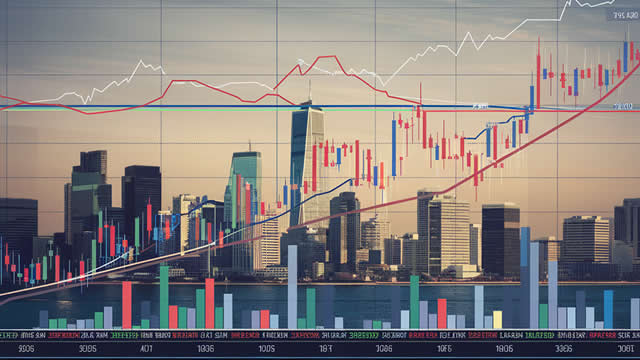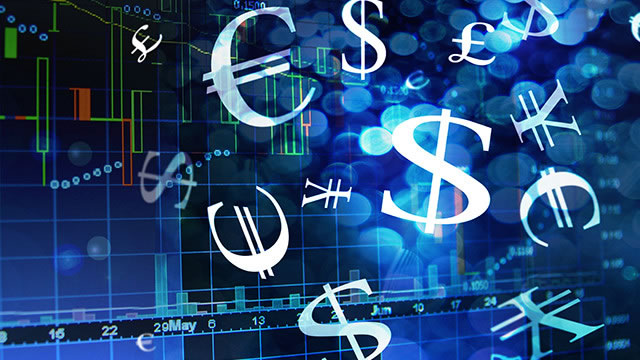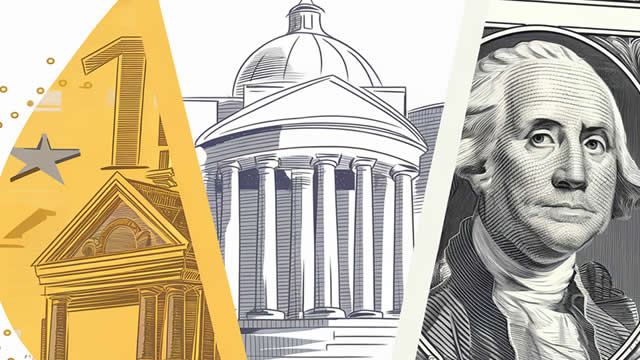The Unexpected Dance of USD/JPY: Safe-Haven Demand vs. Reciprocal Tariffs
In the ever-evolving world of currency markets, it’s not uncommon for unexpected events to cause a ripple effect. Recently, the USD/JPY exchange rate took a tumble, leaving investors scratching their heads. Let’s delve into the reasons behind this intriguing move.
Safe-Haven Demand: A Storm in a (Global) Teacup
First, let’s address the elephant in the room: safe-haven demand. When uncertainty reigns supreme, investors often seek out the perceived safety of the US dollar. In times of economic instability or geopolitical tensions, the greenback tends to appreciate. This is because the US dollar is considered a “safe haven” currency, as it is the world’s primary reserve currency and the US economy is often seen as a stable and reliable market.
However, the recent decline in USD/JPY levels has left some analysts baffled. After all, Japan is currently grappling with a 24% reciprocal tariff rate. This steep tariff was imposed in response to similar measures taken by the US. So, why is the safe-haven demand not overpowering this potential economic headwind?
Reciprocal Tariffs: A Double-Edged Sword
The answer lies in the complex nature of currency markets. While the US dollar may be considered a safe haven, the Japanese yen also has its own unique allure. The yen is often seen as a “safe haven” currency in its own right, particularly during times of economic uncertainty in Asia. Additionally, the Bank of Japan’s (BoJ) commitment to maintaining a low interest rate environment makes the yen an attractive option for carry trade, which can further bolster its value.
Moreover, the reciprocal tariffs between the US and Japan are not a new development. While the recent escalation may have intensified the situation, the underlying tensions have been simmering for some time. As such, the market may have already priced in some of these risks.
Impact on Individuals: A Matter of Perspective
So, what does this mean for the average Joe or Jane? Well, it ultimately depends on your individual circumstances. If you’re holding US dollars and planning to travel to Japan, the depreciation of the USD/JPY exchange rate could make your trip more expensive. On the other hand, if you’re a Japanese importer of US goods, the strengthening yen could make your purchases less costly.
Impact on the World: A Ripple Effect
On a larger scale, the USD/JPY exchange rate can have far-reaching consequences. For instance, it could impact global trade flows, as a stronger yen makes Japanese exports more expensive for foreign buyers. This could potentially lead to a decrease in demand for Japanese goods, which could, in turn, negatively affect Japan’s economy.
Furthermore, the USD/JPY exchange rate can also influence other currencies through the phenomenon known as “cross rates.” For example, the EUR/JPY exchange rate is closely linked to the USD/JPY rate. As such, any significant movements in the USD/JPY rate can have a ripple effect on other currency pairs.
Conclusion: A Dance of Uncertainties
In conclusion, the dance between safe-haven demand and reciprocal tariffs in the USD/JPY exchange rate is a complex one. While the US dollar may be considered a safe haven, the Japanese yen also has its own unique allure. Moreover, the market may have already priced in some of the risks associated with these tariffs. As individuals, it’s essential to keep abreast of these developments and consider how they might impact your personal circumstances. And for the world at large, the ripple effect of the USD/JPY exchange rate can have far-reaching consequences.
- Safe-haven demand for the US dollar can lead to its appreciation
- Japanese yen is also considered a safe haven currency
- Reciprocal tariffs between the US and Japan have been a long-standing issue
- Impact on individuals depends on their circumstances
- Impact on the world can include changes in trade flows and currency pairs





